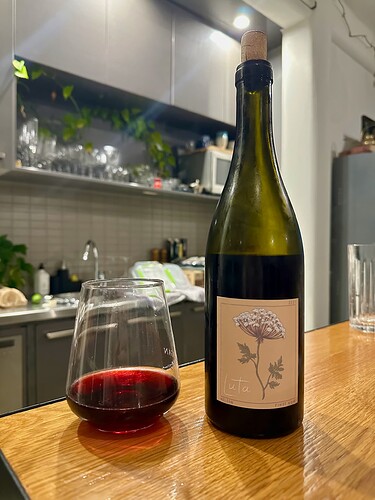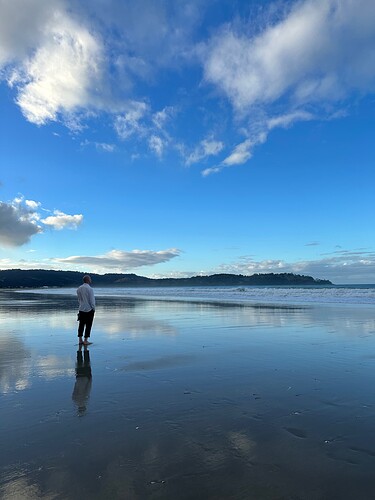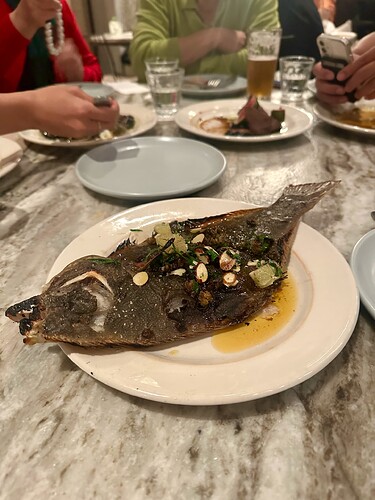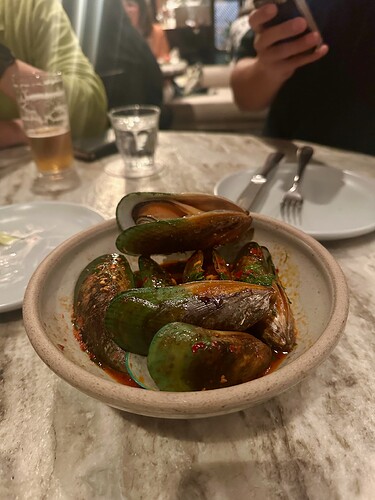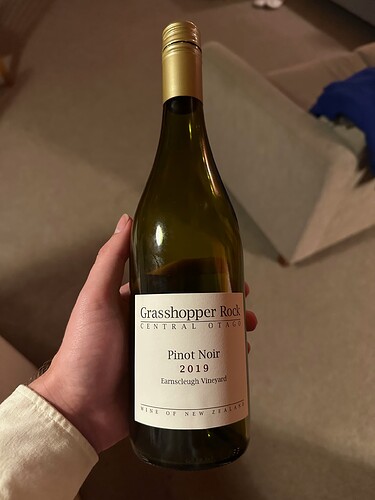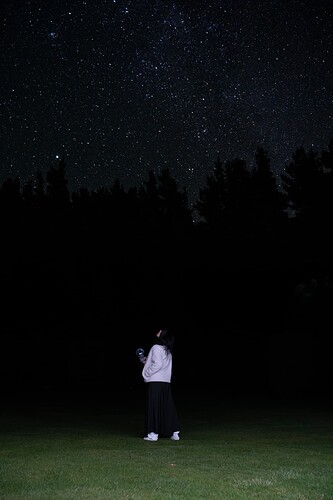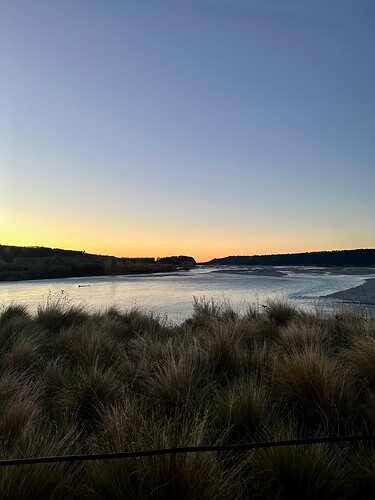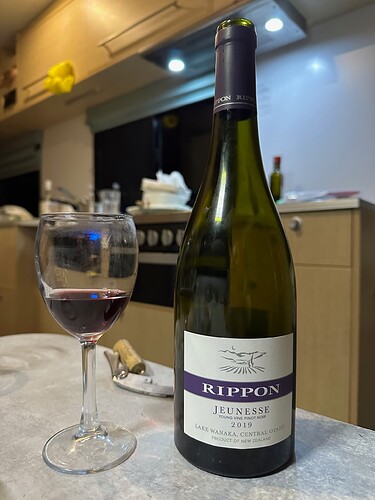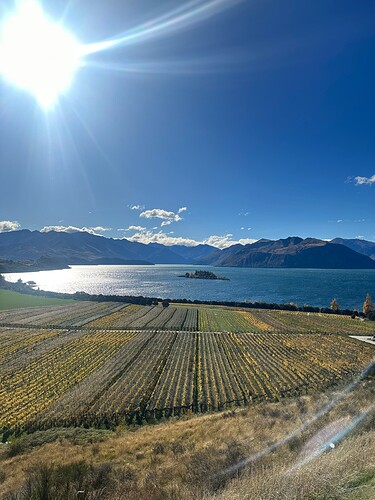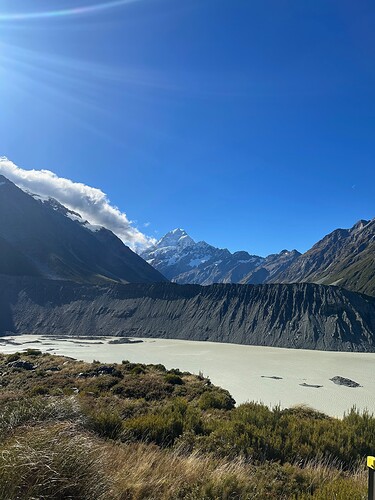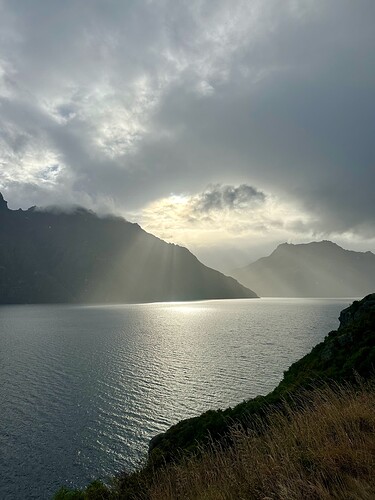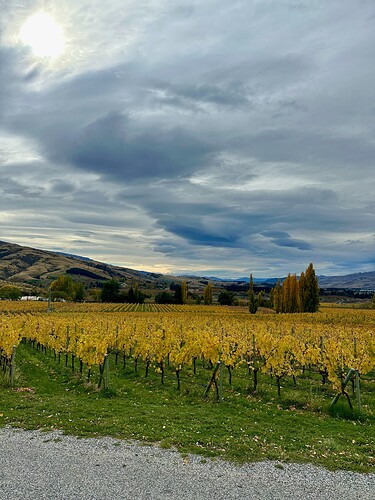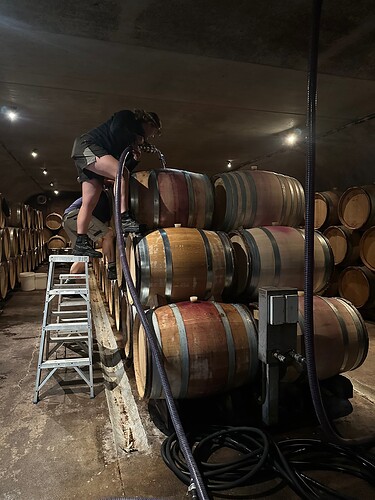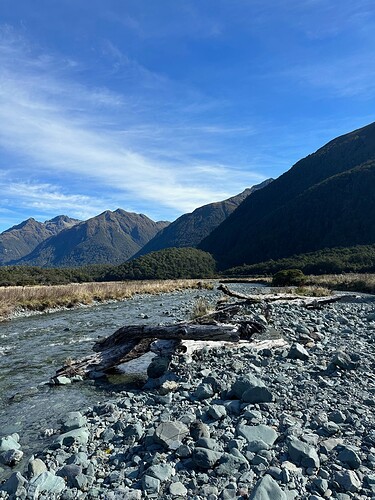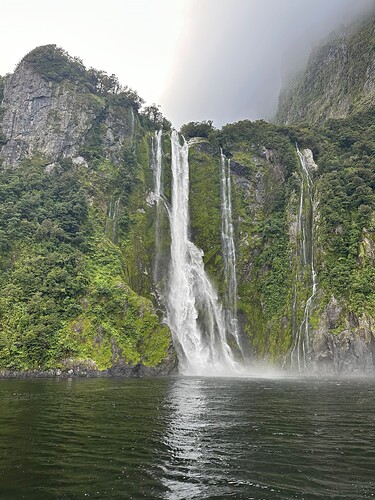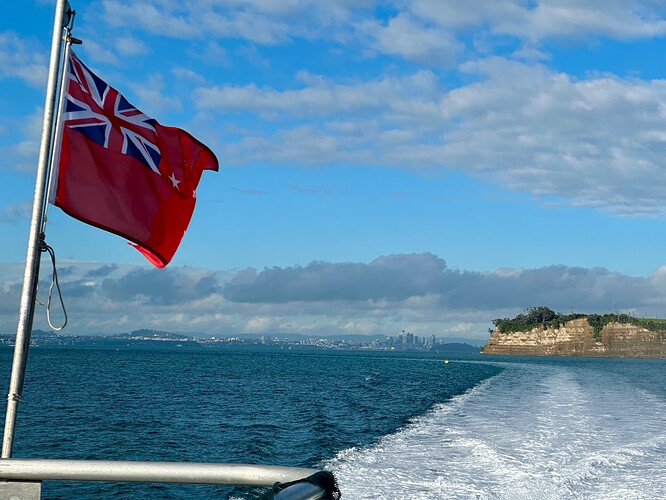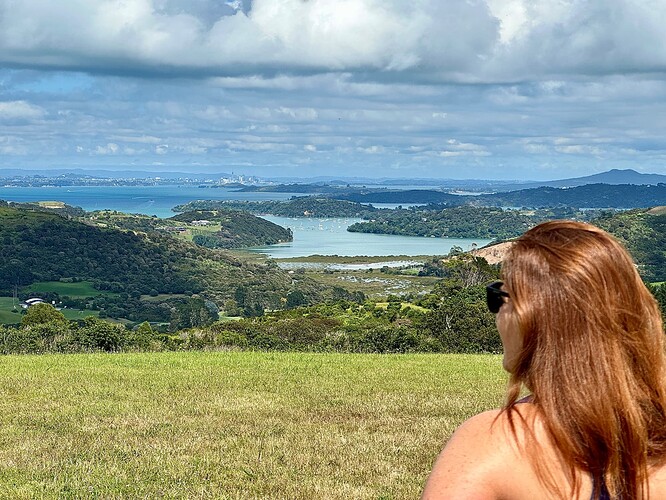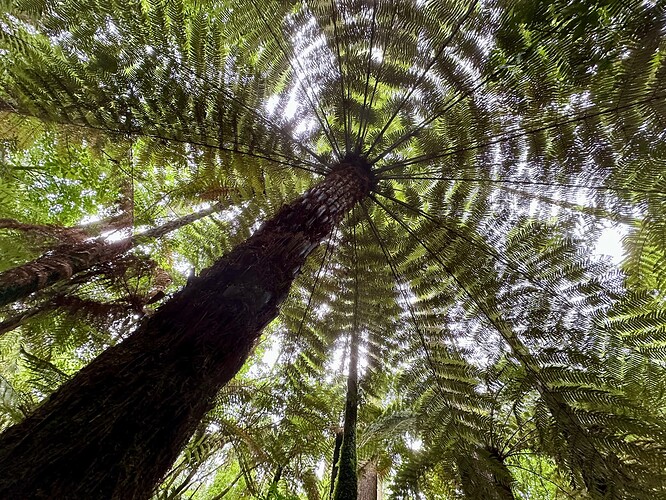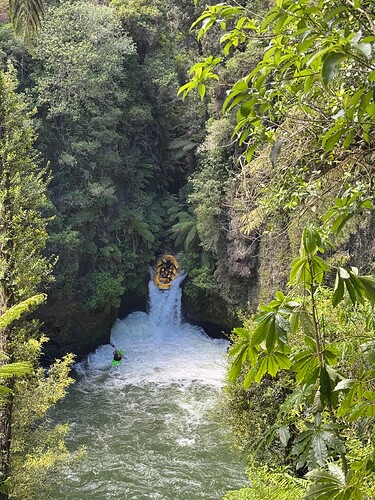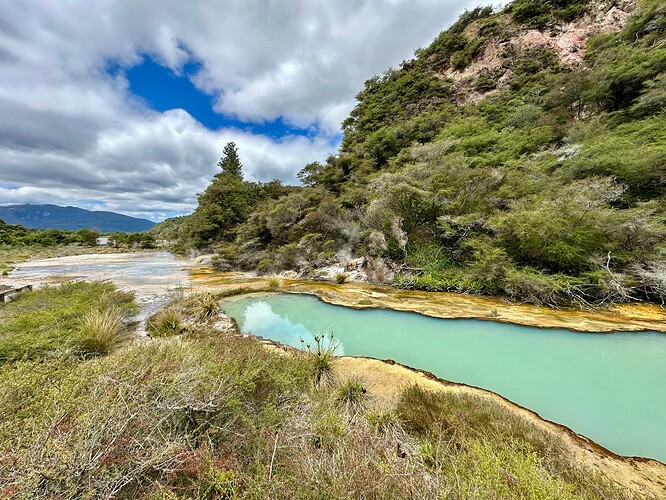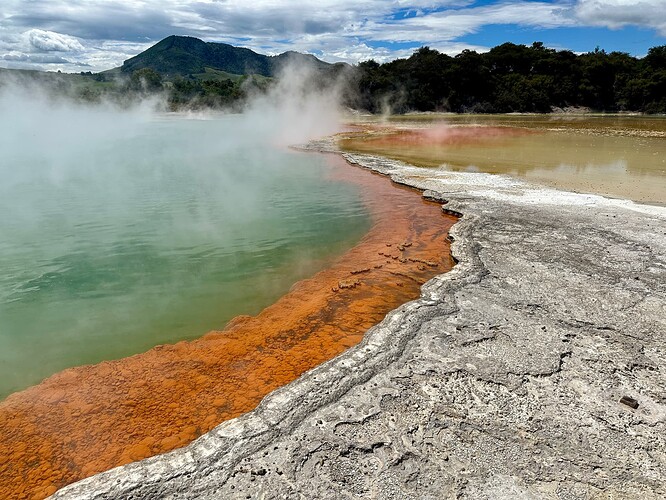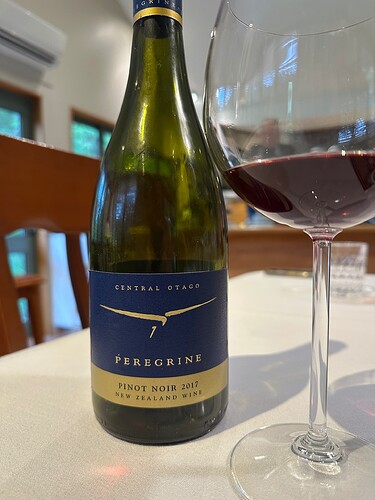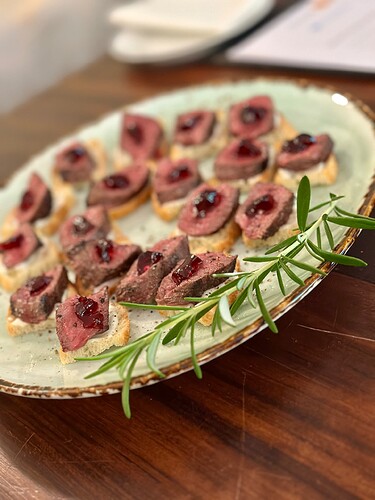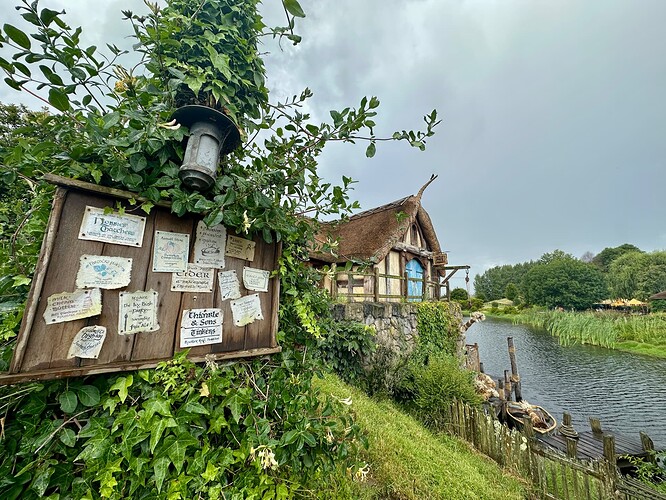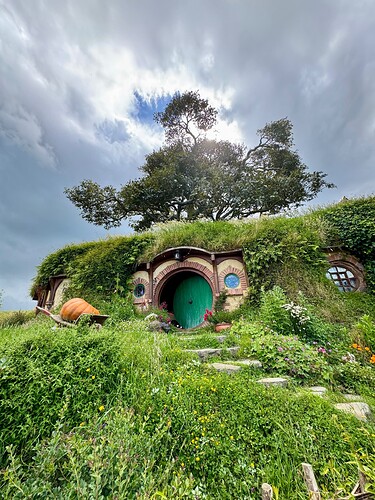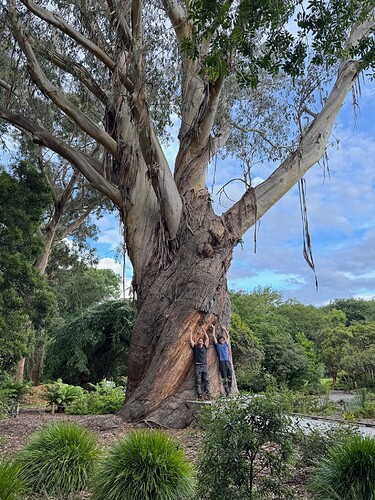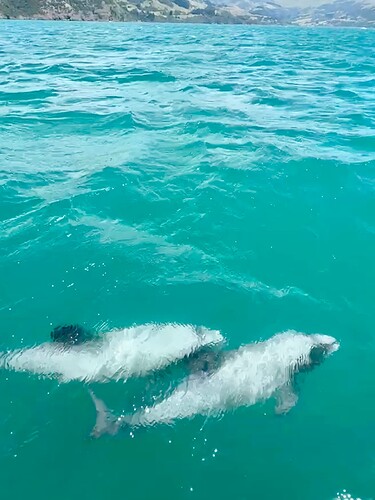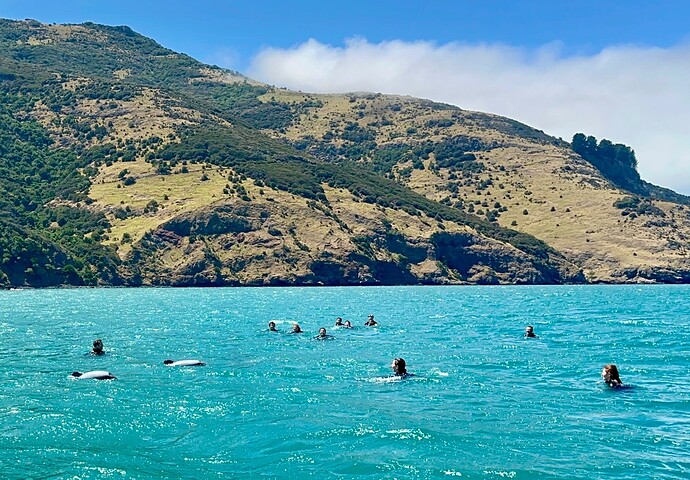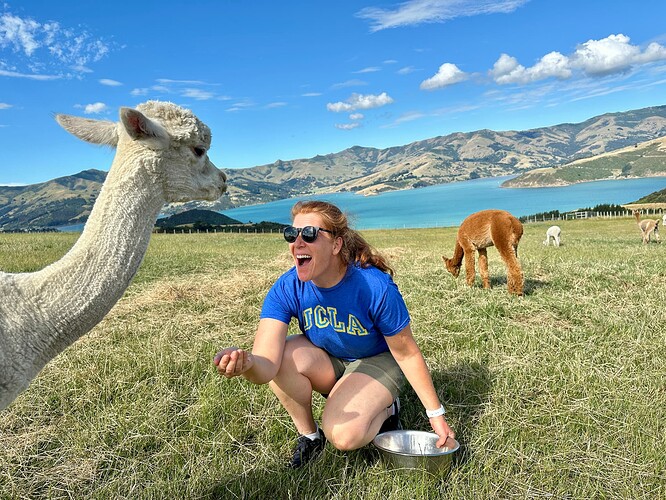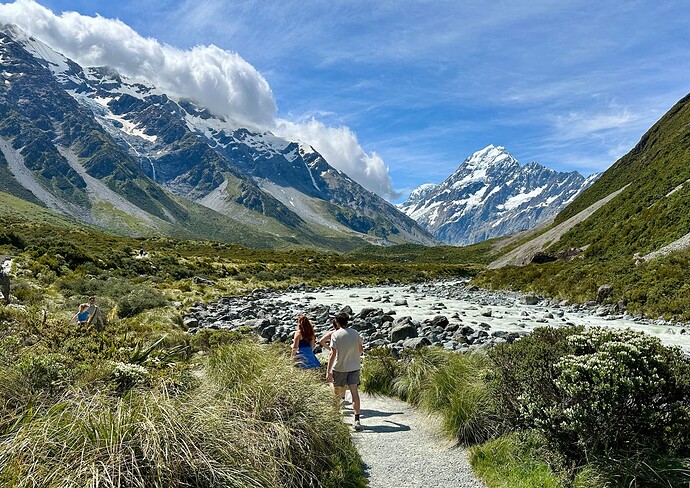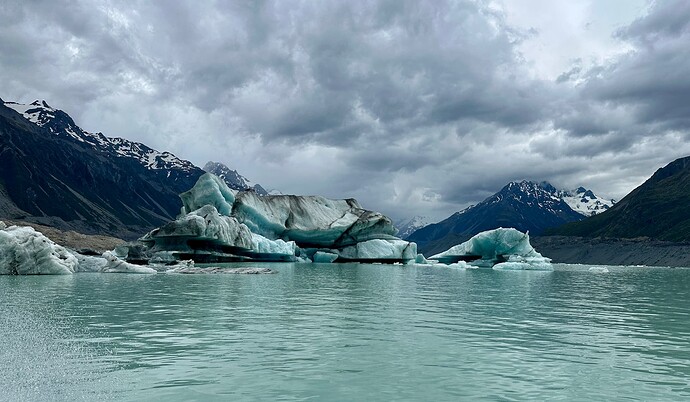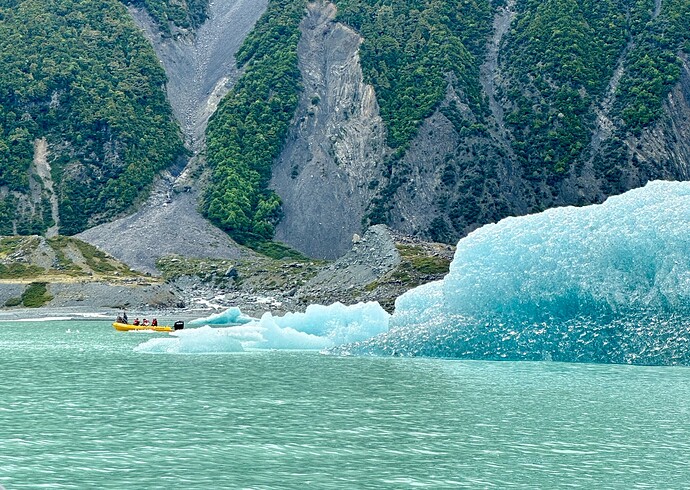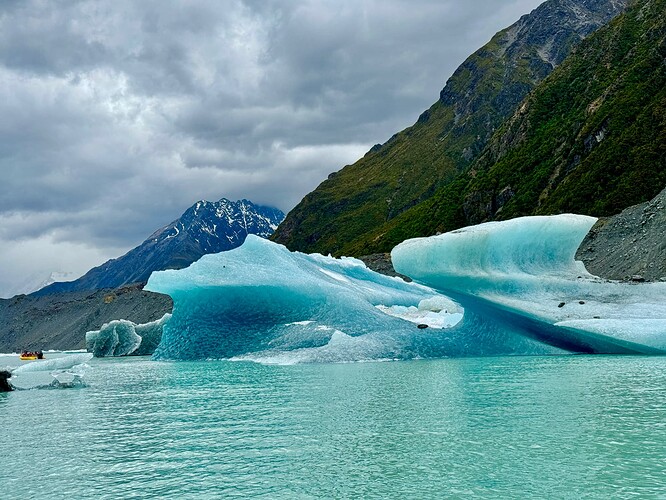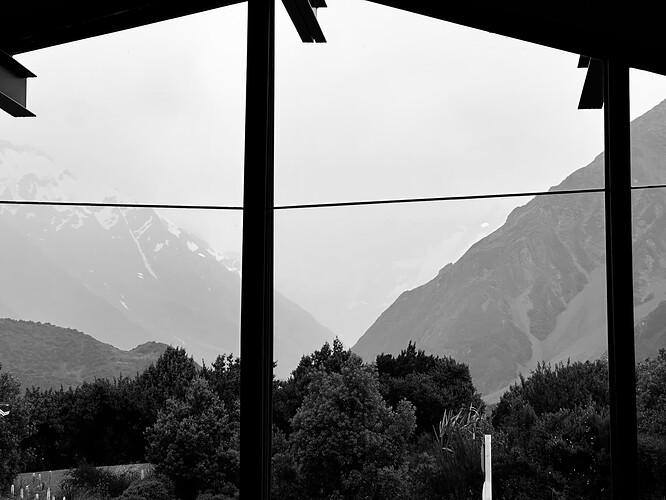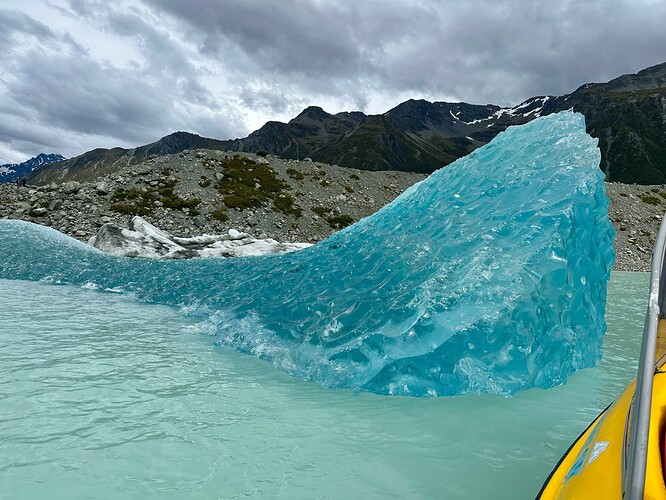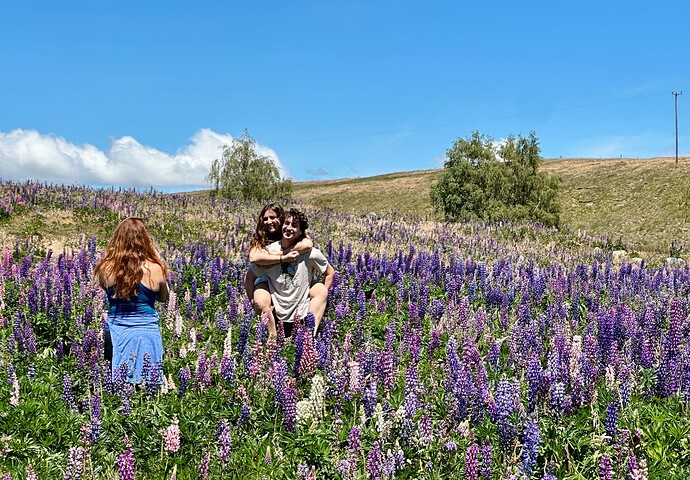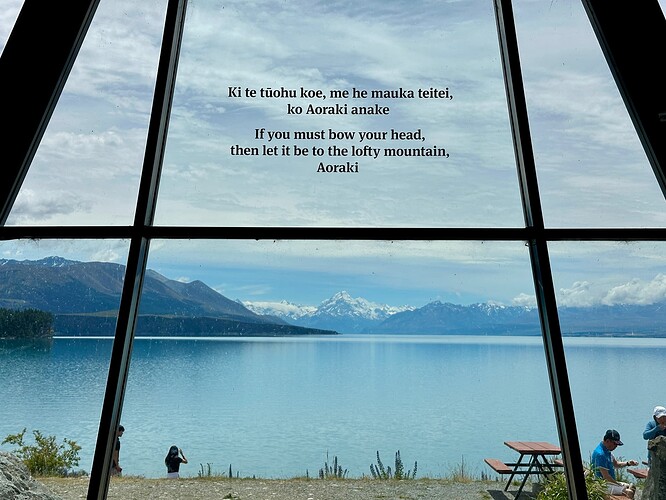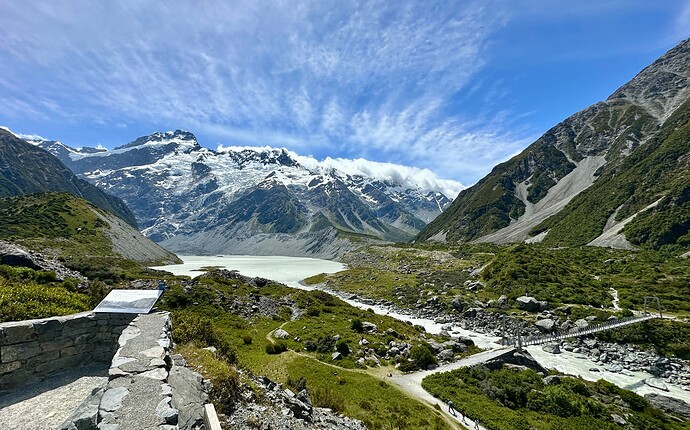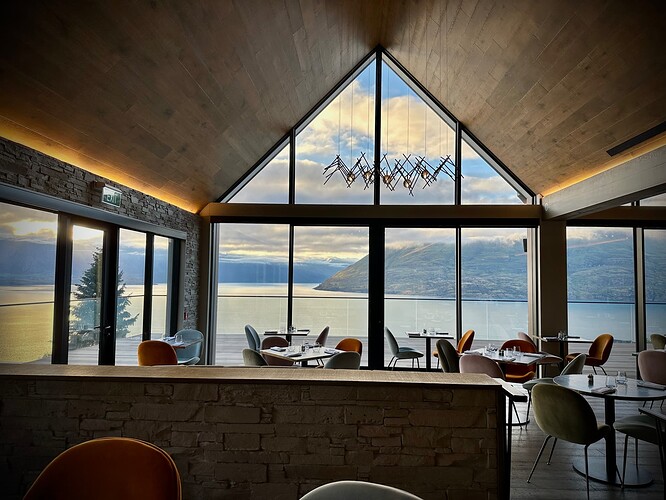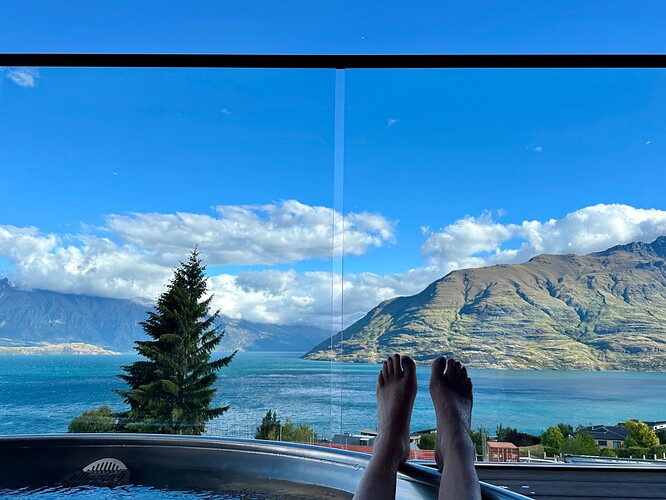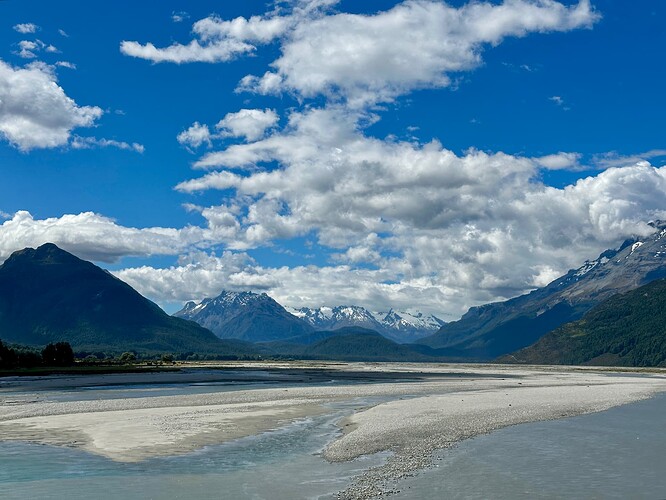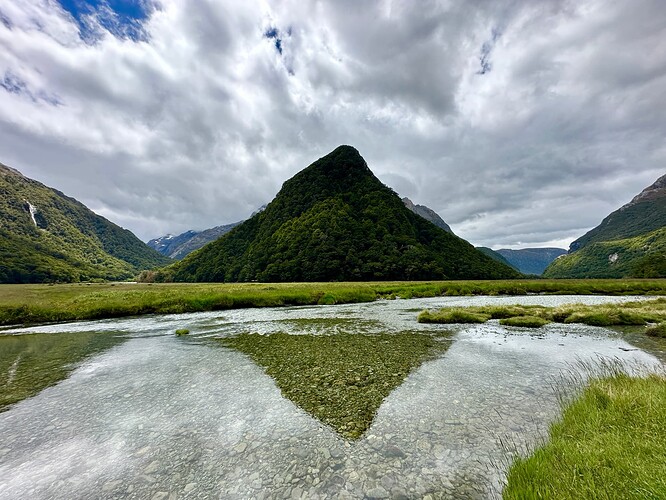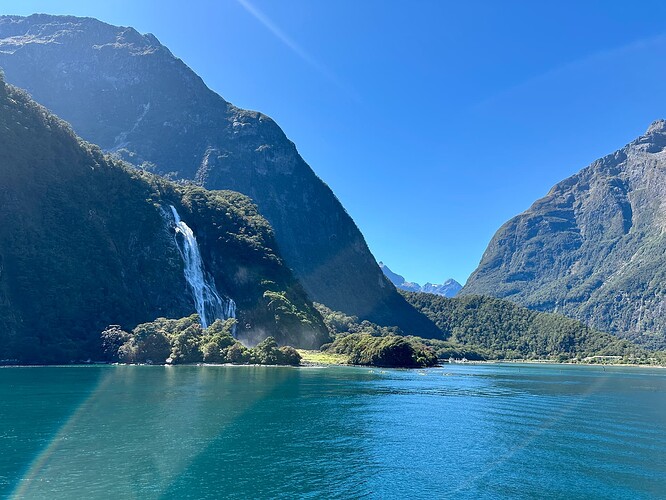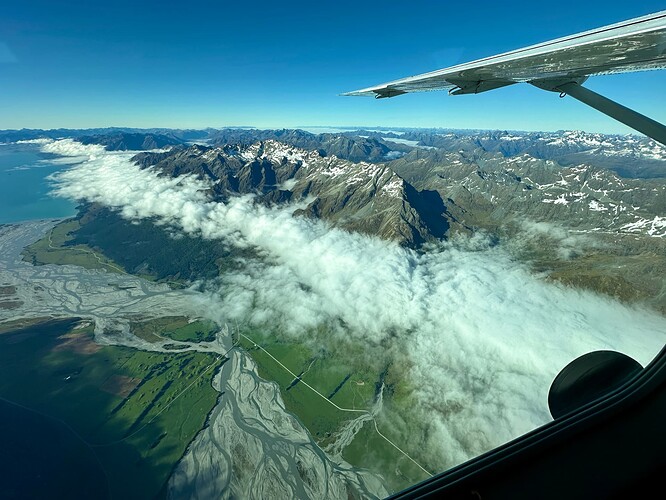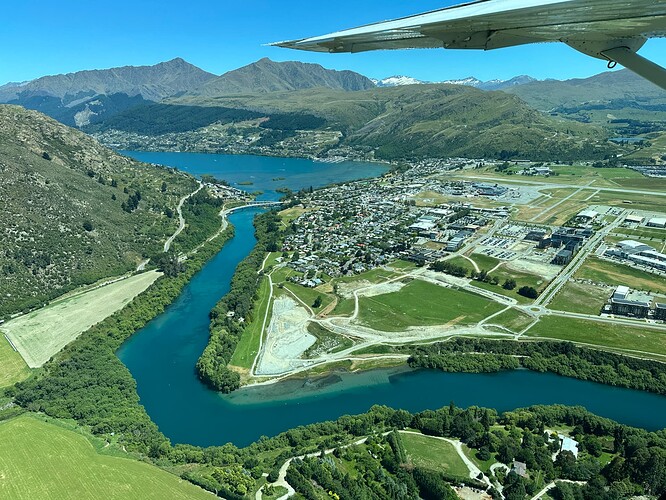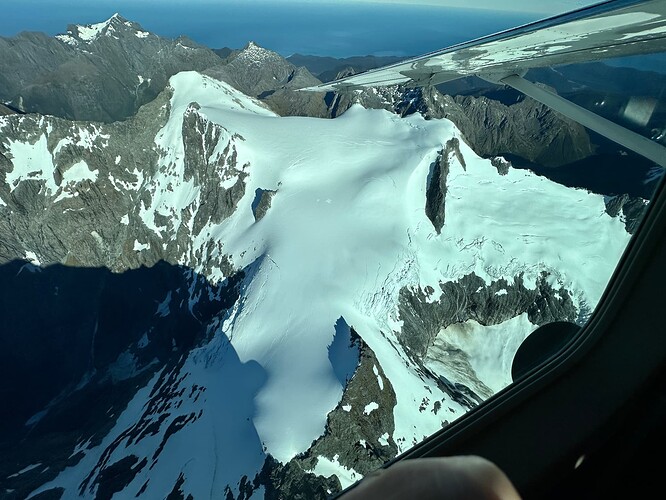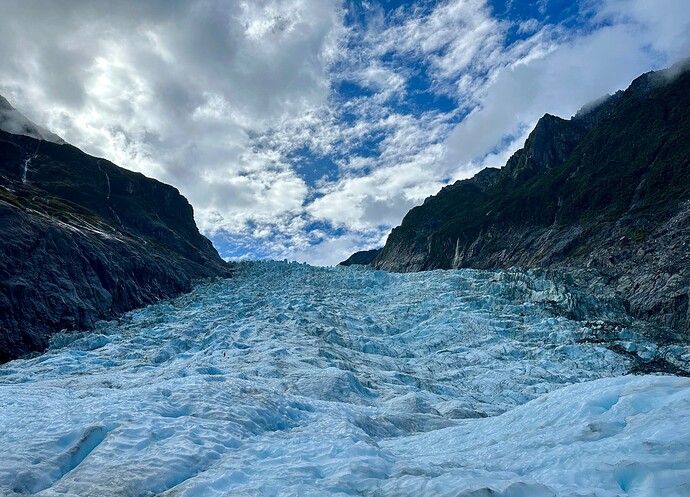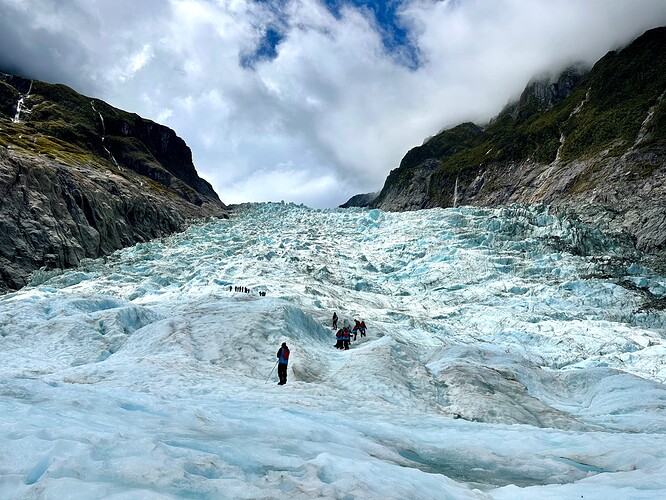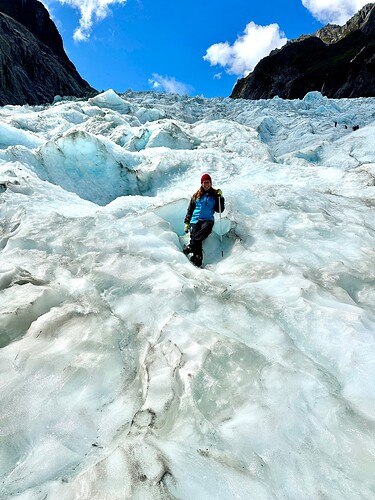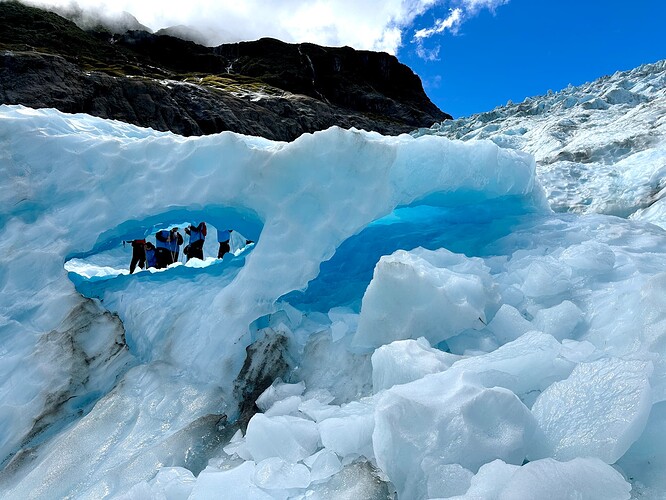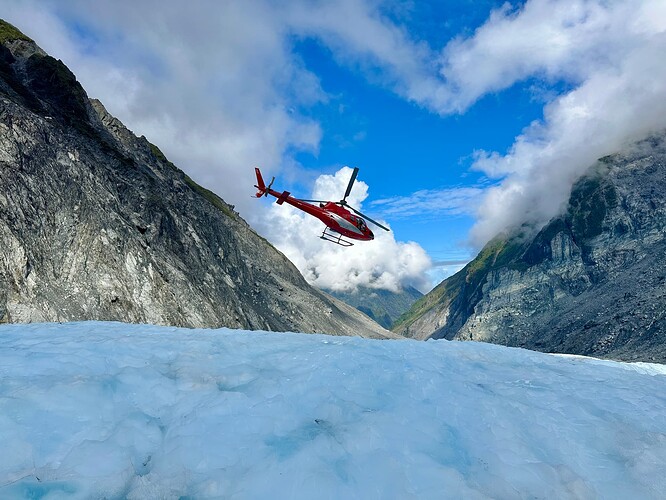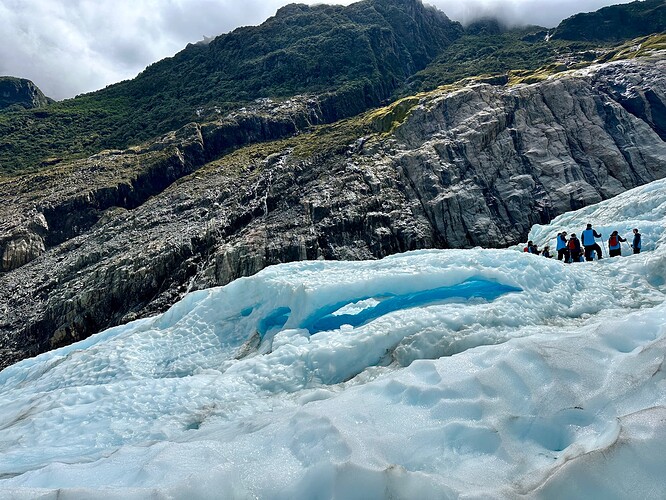Hello
Just a trip report and remarks on the wine tasted.
Together with my in laws we did a 13 day trip in NZ, where we spent 5 days on the north island and then 7 days on the south island in a campervan all together. Many activities had to be aligned and fitted in to a very tight schedule, and for everyone this was a first staying in a campervan. Not sure it’s a re-do for us again as 5 grown ups, but it was fun none the less!
First few days we stayed in Auckland and Taupo. We opted for a simple city tour booked via AirBnB and very tired after our 12 hour flight from Seoul, went to The Brewers Co-Op for snacky food plus IPA’s for my father-in-law who brews IPA on hobby level, and this was followed by cold cuts and cheese in our AirBnB accompanied by a bottle of Shadow Pinot Noir 2021, by Lute, which is a young low intervention producer from Nelson.
Next two days was in the spirit of golfing and surfing. The storm of the previous night had passed, which allowed my in laws to play a round of golf, and me to chase some swell in Omaha beach where i managed to snag a few close-out barrels. Good fun. Dinner was at Kingi, which albeit at times a little chaotic served a great meal and the wine list was very fun. The wife had the Real McCoy from Valli, which was a aromatically shy skin-contact thing, and i had the Prophets Rock Pinot Gris, which showed really really well.
Next day toured down south to Taupo where we arrived at night and cooked up a good meal with some amazing NZ lamb. I opened the Grasshopper Rock Pinot Noir 2019. Next day was a trip to the glowworm caves followed by a swim at the thermal terraces. The following day we drove up and returned the rental car and flew south.
In Christchurch we quickly picked up the van and drove towards Rakaia Gorge. My in laws packed 1.5 Kg of Kimchi and a mix of other goods so this night was a bit more in our usual vibe with a curry. For dinner i opened the Peregrine Pinot Noir 2021 and Greystone Pinot Noir 2019 — the family positively remarked on the Greystone and i think this was a great bottle. The white was Mt Difficulty Chenin Blanc but the residual sugar was way too high and it simply was one dimensional. At night time we had a clear view of the milky way and it was so beautiful.
Next day we drove to Tekapo and slept there before heading to Mount Cook for a short hike. It was majestic view, but sad to see the glacier nearly gone. We drove south and picked up Salmon Sashimi on the way, which we ate at our campground at Lake Hawea at night accompanied by the Cloudy Bay Pinot Noir. The next day we drove down to Wanaka and had a tasting at Rippon, which was enjoyable for everyone with their amazing view, and amazing Pinots. Haddock was a great host and everyone felt at ease not being anywhere near as enthusiastic as me, so that’s a great help when you’re in new territory. I wish that they opened something older or of the single vineyard wines. A quick walk down to the Wanaka tree, and then the rest of the sashimi at night with the Jeunesse of Rippon. Fun wine.
Next day we had a tasting at Felton Road at 10.30. We arrived 15 minutes late due to traffic unfortunately so started our tour from the production facilities. It was fun to see, but it was a very difficult visit for my family because the hostess was very dismissive to their questions, and even very defensive towards my deeper questions. I won’t dwell too much on it, because we can all have a bad day. Further ideas and critique will be unfolded below. We continued to Queenstown to do groceries and headed towards Eglinton Valley where we had a lot for the night, before we continued to Milford Sound the next day.
Milford sound was amazing. We arrived very early to beat the crowds and that was a wise decisions as it started pouring in at 11.30 when we left. We picked the smallest boat we could find and had a fun little cruise through it all in the lifting morning fog. An interesting south african captain behind the wheel, who had many stories to tell.
Driving back slowly making sure to stop here and there to see what we didn’t the day before. We stopped to do groceries and sleep in Te Anau.
Next morning we had to do a serious stretch, because we started the trip driving one day shorter because of some back issues in one of our family members. We drove from Te Anau to Rakaia Gorge, in a 8 hour drive, stopping an hour at a beach outside Dunedin to get some sand on our feets and some food in the system.
We stayed the night at a very remote campsite and feasted on whatever we had left in our fridge. Had a fun talk with a young italian couple and went to bed.
Next day it was off to Auckland again and do whatever we could do with the time we had. I had been searching hard for the wines of Sato, a japanese winemaker who worked at Felton road before purchasing his own vineyards. Dan at Everyday Wines was a tremendous help and gifted a few of his own bottlings. He owns the bar Flor as well. Super sweet people. We met a colleague for drinks, stopped by Gilt on the way home and had some good food and a glass of Alex Foillard Beaujolais Villages and a glass of Prophets Rock Home Vineyard Pinot Noir, which was especially good.
Next day up early and fly home to Seoul.
Thanks to @brodie_thomson for sending some tips, which i unfortunately did not get to use. Next time i will!
The best of wines;
Prophets Rock — the white and reds tasted was at a consistently high level
Peregrine — a somewhat darker take on the otherwise very apparent “cold climate” pinot style
Greystone — Excellent Pinot Noir. Did not get to taste the rest of the lineup unfortunately.
Grasshopper Rock — Super balanced and nice.
Luta — New low intervention producer, nice textural thing that was on the less minerally side.
Felton Road — I mean these Pinots are just super nice and i get why they’re perceived as the top. The Chardonnay was actually the only chardonnay that i felt was a standalone take on the cold climate idea. Very unique. The rieslings not so much…
Rippon — Very nice Pinot Noir, but perhaps not the most exciting after tasting most things.
What i feel like i missed out on; Ata Rangi and Valli, but next time, as i definitely want to come back.
Bald Hills Single Vineyard 2018, which threw me into a downward spiral trying to explain to myself why we do the things we do…
Getting to the far reaches of the earth presents itself with a wide variety of possibilities and chances of redefining yourself and shaping a new common language. Something which has happened in abundance on this beautiful island, and the way that new and old, imported and native is living together is glorious.
Therefore it seems like a wasted chance to mimic something which takes place halfway around the globe. In between burgundy and California, theres thousands of kilometers of original ideas and native agricultural practices that is formed by its own local ecosystems, and has evolved into a flawless and beautiful thing. I sometimes wonder if the practice of cloning and inoculating with yeast strains is out of fear of the unknown, in admiration of the greats or simply out of pure laziness. Baking bread at home brings different colors of yeast to my starter and at time has created a more unpredictable start, until the starter has been mastered, and the outcome is a bread that’s native, perhaps despite the idiosyncrasies of production that is still rooted somewhere. Mimicking a product fully with external components also has a place in the world, especially of a someone trying to fit into something or be part of something, but the greatness obviously only comes out of creating something that’s larger than what you wish to mimic.
Lastly you may also just want to make something and wish to see it happen with no surprise — and it’s more than fair to want to live a life with no surprises. I just get confused as an enthusiast when I can’t see what the true goal is, or that the product is shrouded in mystery as to what it actually is.
There where a few idiosyncrasies at play, stylistically and in terms of notes. At Rippon this was something they where able to showcase by having the “Jeunesse” next to a series of cuvées based on older vines. The Jeunesse is a cuvee of younger plantings of PN, and it showed very equal to many of the younger producers in the country that I sampled. The older vines at Rippon and Felton road showed a very different, deeper and more serious take on PN. It was clear at both these houses that they stylistically embraced a cold climate PN, and also is something that they master. All of the Pinots that I liked showed these similar characteristics of just ripened red fruits, good minerality and finally an elegant use of oak, but all perhaps varied a bit on how old the wines where, which also was aparent on the palate.
The biggest differences was apparent in the whites, which was all over the spectrum, and ranging from ingenious to flabby. Much like my rant previously of the origins of things, this is where it’s evident again, because what should it be here? Should it be sweet rieslings or bone dry chenins — I’m personally not sure, but the most convincing take on this is perhaps either the Cloudy Bay SB with it’s ethereal minerality and greenness, or perhaps the Felton Road Chardonnay with it’s singular style, which really surprised me. It was apparent on the nose that it was Chardy, but even though it had undergone Malo and rested a good long time on the lees, it was still biting and very upright in its form. Somewhat along a Chablis but with a tiny bit more oak.
The screw cap conundrum is ongoing and I’m somewhat bothered that Felton for example, where the hostess scoffed at me for asking as to why screw cap and not DIAM, doesn’t offer a deeper tasting. In her words “It’s just our style and decision”, and “it’s 50 years of research” is just not convincing and almost a mockery when we’re standing in one of two cellars boasting ten thousands of bottles where they could use one every now and then to convince guests from abroad as to why they actually are using screwcap. Sure enough I could source my own and age my own, but if you’re more or less the ambassador of the usage of this, then be more welcoming. But that’s just my opinion.
Before anyone jumps on the comment thread here to defend screw caps and Felton Road, I just have to say that I’m impressed with your wines and not dissuaded by your screw caps, but I just wished someone took the chance to convince me without making me sound ignorant for even asking the question. I’m just curious, and unfortunately yet unaware of how it ages…
All in all I want conclude by saying that I’m very impressed and hopefull by what I saw. So many playful things and microclimates being used — had I had the chance I’d buy a vineyard in a flash down there if it wasn’t so expensive. Imagine eating green lipped mussels and drinking a Pinot Gris that can compete with the best in Alsace all coming from within an hour away from you.
Finally such amazing waves that I wonder why on earth I go to Bali to surf…
